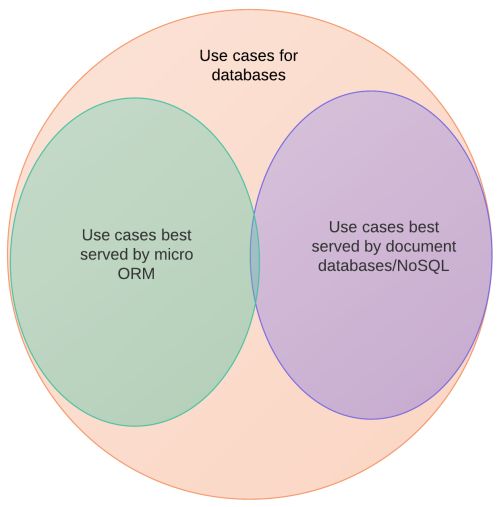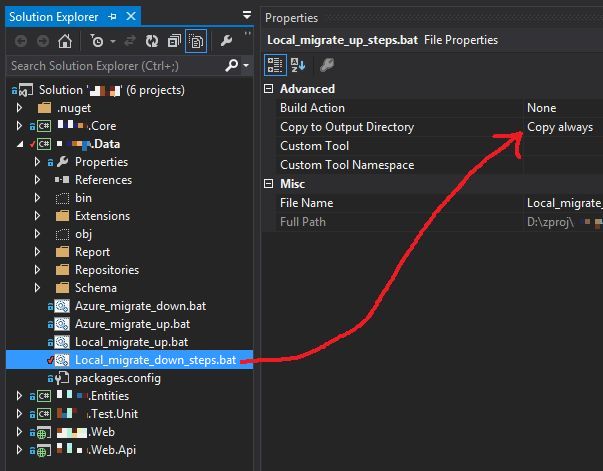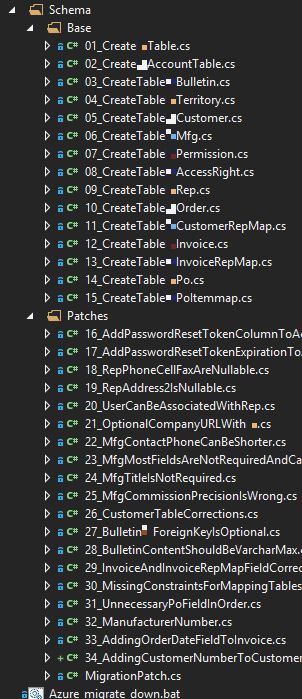Posts tagged with 'or'
I took a long break from ORMs in my career: about 4 years. I was working on a reporting product, and an ORM is just the wrong tool for that. Before that, I worked with ORMs here and there: NHibernate and another ORM I don't even want to mention by name for fear of being associated with it in public. For some of my own projects like the next version of EZRep and this very blog site, I've switched to a so-called micro-ORM, specifically Dapper.
Now that I'm back to consulting, I'm back into the ORM game. This time, it's Entity Framework. Early in this project (that uses EF), I've been experiencing quite a bit of frustration. It seems like I'm swimming upstream while jumping through hoops to accomplish really simple things that wouldn't take nearly as much work in Dapper. Maybe this is just me getting back into the habit, but it's also got me thinking: why do I really need a "full" ORM anymore? Abstraction and indirection are important tools, but perhaps full ORMs aren't the least leaky abstraction anymore in many cases?
Yes, a full ORM is sometimes RTRJ. However, I think micro ORMs (Dapper, PetaPoco, Massive) and document databases (Raven, Couch, Mongo) have taken a big bite out of the pool of possible use cases, and that a lot of full ORM and/or RDBMS usage in projects is really used not because it's the best tool, but because of the sheer momentum of the status quo. Imagine a snapshot of a Venn diagram taken 5 or 10 years ago compared to one I made up to represent a snapshot of today.

There might be missing bubbles like "RDBMS + no ORM" or "Json string in text file", and the exact proportions are open to interpretation. But the point I'm trying to make is this: the number of use cases that are best served by RDBMS + full ORM is shrinking, and will continue to shrink.
Welcome to another "Weekly Concerns". This is a post-a-week series of interesting links, relevant to programming and programmers. You can check out previous Weekly Concerns posts in the archive.
- Paul Sodimu sent me a link to his blog post about Aspect Oriented Programming Using Castle Windsor. Check it out!
- Get yourself a free C# t-shirt from Xamarin.
- The ideal length of tweets, headlines, blog posts, email subjects, and more.
- CodeWars: you can't even get in until you complete a coding challenge.
If you have an interesting link that you'd like to see in Weekly Concerns, leave a comment or contact me.
Managing database migrations is an important part of a project. Everyone on the team needs to be on the same page when it comes to the database, while still having the ability to make database changes when necessary.
I've used a variety of tools to do this on various projects, but one tool that I especially like is Fluent Migrator.
The idea with Fluent Migrator is to create a series of classes that create and modify the database schema (and data). Each class represents a single "migration" (in the sense that you are "migrating" from an empty database to a database with something in it). Here's an example of a migration that I might create if I were creating a table to store user information:
Several things to note:
Fluent syntax. This just means that you can chain stuff together in a natural and fluent way (see NDecision, Fluent NHibernate, Fluent Validation, etc for other examples). This was kinda a "trend" for a while in C# projects, but it does make sense in a number of contexts. The goal is to make the API discoverable and easy to use and also to make the code easier to read. Note that there are some sensible defaults when you create columns, but it never hurts to be explicit.
Migration attribute and Migration base class. This attribute and base class needs to be on each migration class. The number in the attribute determines the order in which the migrations will be executed (we only have 1 so far, but the next one would be 2, for instance).
Up and Down. Override the "Up" method to put in the code that will create/alter the database. Override the "Down" method to put in the code that will revert the changes made in the "Up" method. In some cases, it may not make sense to create a "Down".
Okay, let's say I create that migration, execute it (more on how to execute it later) against a database, write some code that uses that table, and check everything in. The next day, I learn that I need to create an optional "url" field for users. To do that, I'll create another migration class (I'm not editing the existing migration).
These migrations get compiled into a plain DLL, so to actually execute them against a database, you'll need some sort of migration runner. I've been using the command line runner, but there are runners for NAnt, MSBuild, and Rake available too if you use any of those tools on your build server to automatically deploy the database migrations alongside your application.
My next step usually involves creating some convenience batch files to use the command line migration runner. You can use these locally while you develop, or possibly call them as part of your build process. Here's an example of a set of batch files that I use to "Up" my local database to run all the latest migrations and one to "Down" my migration back a number of steps (both of these operations are very common while developing).
I put these in the project, but I always have them deploy to the bin folder (where the compiled migrations are). You could do it vice versa if you want.

So that's it. Works against SQL 2012 and SQL Azure, in case you were wondering.
One other thing I do for the sake of organization is that I name all my migration files like NN_MigrationName. When I look at the list of files, I'll see them in migration order. Here's a screenshot from a real project of mine:

Welcome back to another "Weekly Concerns" (after skipping a week). This is a post-a-week series of interesting links, relevant to programming and programmers. You can check out previous Weekly Concerns posts in the archive.
- If you haven't seen Seth Petry-Johnson's Patterns of Effective Test Setup presentation yet, you should at least check out his slides.
- Source code for MS-DOS and Word for Windows is now available.
- You can play Missile Command with a YouTube video. Just go to any YouTube video, like this one, and type "1980".
- Mark Greenway and myself did an introductory presentation on WordPress with Azure through the MVP Mentor program. A recording of WordPress with Azure is now available.
If you have an interesting link that you'd like to see in Weekly Concerns, leave a comment or contact me.
My esteemed colleague Mark Greenway and I will be doing a presentation on using WordPress in Windows Azure as part of the Microsoft MVP Mentor program. This presentation was prepared for college-aged students in the MVP Mentor program, but anyone is welcome to join!
If you are new to either Azure or to WordPress, then I promise that you'll learn something.
The session will be on Wednesday, March 5th, 2014, at 7pm eastern time. See more details on Facebook.
